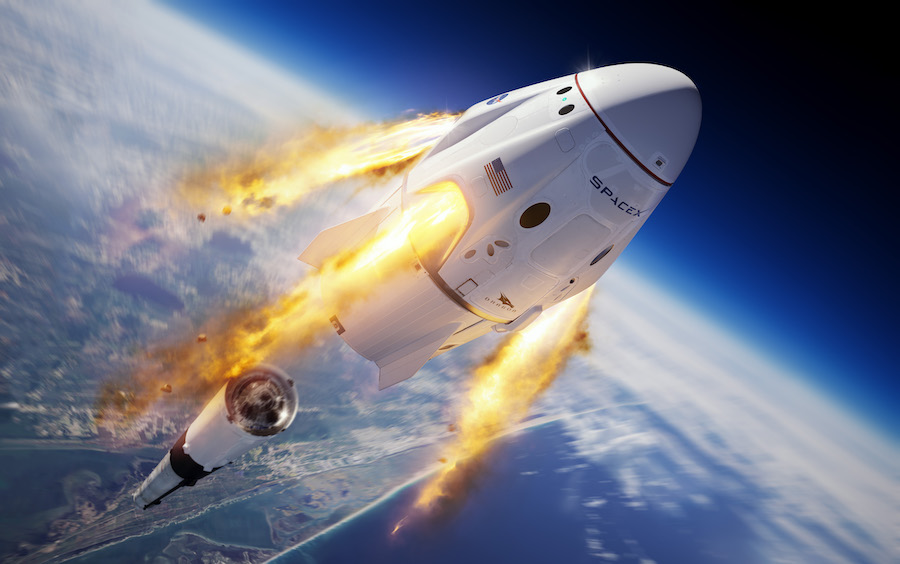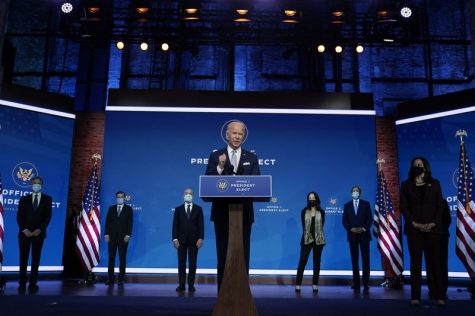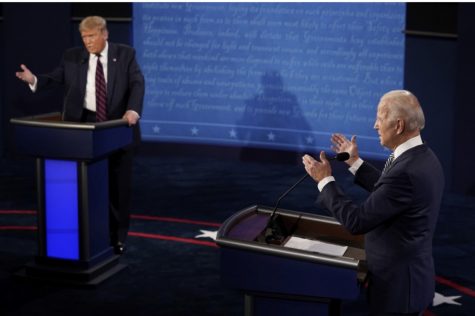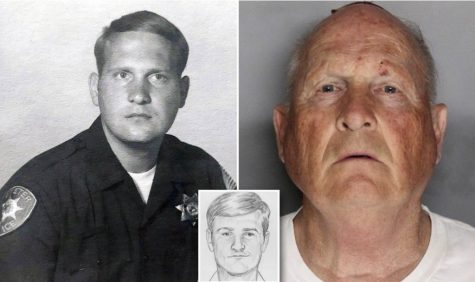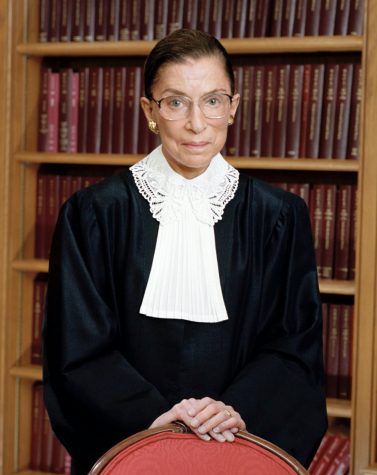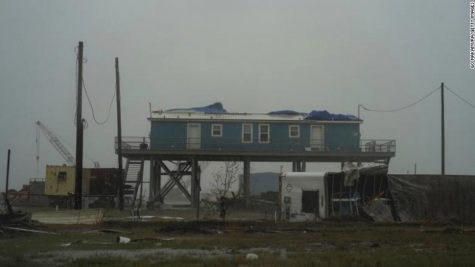Launching From American Soil
SpaceX
Illustration of the SpaceX Crew Dragon and Falcon 9 rocket during the company’s uncrewed In-Flight Abort Test for NASA’s Commercial Crew Program. This demonstration test of Crew Dragon’s launch escape capabilities is designed to provide valuable data toward NASA certifying SpaceX’s crew transportation system for carrying astronauts to and from the International Space Station.
May 25, 2020
The United States has been a pioneer in space travel since the Cold War era. In 1958, NASA, the National Aeronautics and Space Administration, was founded with the intent of sponsoring US space exploration. Over the course of the 20th century, NASA made many groundbreaking achievements, like landing the first man on the moon and completing the International Space Station in collaboration with Russia, Japan, Canda, and the European Union.
Starting in the late ’70s, NASA began the Space Shuttle Program. Preceding this, primarily rocket-shaped vehicles were used to go to space, but with the Space Shuttle Program, that all would change. The new space shuttles were shaped similarly to a plane and could carry seven or eight people at a time as opposed to two or three. These shuttles also had much more space to transport satellites and areas to perform experiments. In addition to there being more space, the orbiter, the part that looks like a plane, could be reused for each new mission. Although these orbiters could be reused, the program as a whole was extremely expensive, actually proving itself to be more expensive than any other program in space exploration history. Also, though the technology was far more advanced than it had been in the past, the program was extremely dangerous. In 1986 and 2003, the Challenger and the Columbia (two shuttles produced by the Space Shuttle Program) respectively experienced fatal complications, killing seven people aboard each mission.
NASA lost fourteen lives and billions of dollars with this program, so, in 2004, President George W. Bush called for the program to be officially retired in 2011. A new program would begin developing to get to the moon, but that would not be ready for at least another several years. NASA still wanted the ability to send humans to space, so as an alternative, they began sending astronauts to Kazakhstan, where they would fly to space with the Russian cosmonauts. Since this switch, American astronauts have flown exclusively with the Russian space agency, 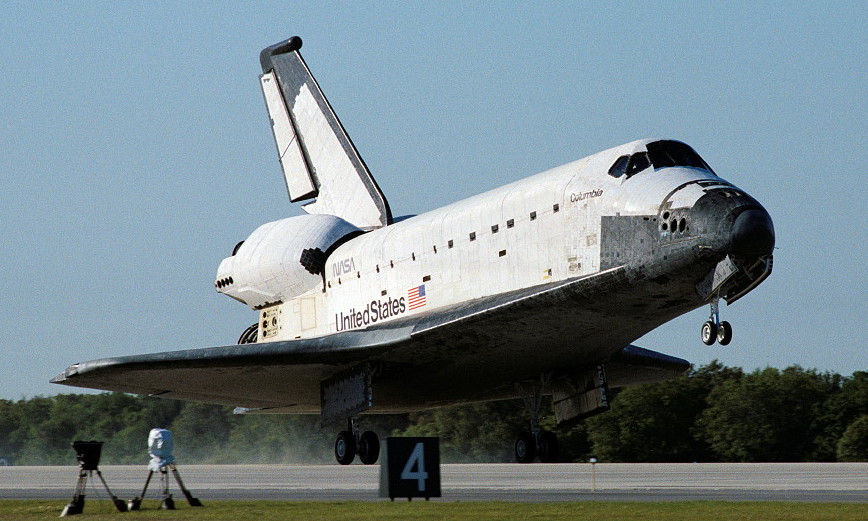 Roscosmos, using Soyuz rockets. These rockets are similar to the rockets that the US used before the Space Shuttle Program. Although relations between the United States and Russia have been tricky in the past, these joint flights have helped bring the two together.
Roscosmos, using Soyuz rockets. These rockets are similar to the rockets that the US used before the Space Shuttle Program. Although relations between the United States and Russia have been tricky in the past, these joint flights have helped bring the two together.
While Americans were going to space on Kazakstanian soil, new programs to get to the moon were being developed in America. NASA developed the Constellation Program in the early 2000s, beginning a new era of space travel. Only a few rockets of this program launched, however, before it was shut down by the Obama administration. Instead of this program, NASA would turn to contract outside businesses to aid with the development and construction of their rockets. In 2011, NASA contracted Boeing and SpaceX, both privately owned businesses, to achieve their goal.
After years of planning and development, SpaceX is going to launch an American into space from US soil for the first time in nine years. On May 27th, 2020, astronauts Robert Behnken and Douglas Hurley will fly on SpaceX’s Crew Dragon Spacecraft, as part of the Commercial Crew Program. Behnken, an ex-flight test engineer in the U.S. Air Force, and Hurley, an ex-fighter and test pilot in the U.S. Marine Corps, have both traveled into space as part of the Space Shuttle Program. During this mission, the spacecraft will be launched from Launch Pad 49A at the Kennedy Space Center in Cape Canaveral, FL. Once in space, the spacecraft will enter the orbit of the International Space Station and will dock after about 24 hours. Behnken and Hurley will stay at the ISS for between one to four months, where they will perform different experiments and research. Once their stay at the ISS is up, their capsule will  undock and reenter Earth’s atmosphere before splashing down in the Atlantic.
undock and reenter Earth’s atmosphere before splashing down in the Atlantic.
This mission, though very well planned out, is a dangerous one and it requires much preparation. With less than three weeks until the launch, SpaceX and NASA are in crunch time to prepare last-minute modifications. During previous NASA programs, it became a tradition for Americans to gather around the launch site and watch, but with the current COVID-19 pandemic, that will not be possible. Although this tradition will not be able to be upheld, people will still be watching this launch around the world online, as NASA and SpaceX make history. The United States wishes Behnken and Hurley the best on their mission and hope that they return home safely.

